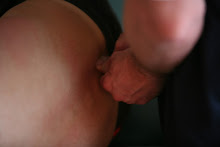
There are only a few times I can think of when people mention Pelvic Floor. One being after child birth and the other being incontinence (bladder control). The typical prescription is to strengthen the pelvic floor.
There is research to show that the breath is directly related to function the pelvic floor as well. In yoga class we learn to breath deep into the abdomen, we hear the teacher refer to diaphragmatic breathing. It is necessary at this point to be able to allow the pelvic floor to drop and relax. Often times people present with tight adductors, hamstrings, gluteals, and rotators of the hips (piriformis, obturator internus) all of which share fascial connections with the pelvic floor, specifically, levator ani.
Learning to feel
On the in breath, the spine begins to flatten and we lose some degree of our lumbar curve. As we breath deep into the diaphragm, it is necessary to drop the abdominal content toward our knees. This achieved by relaxing the pelvic floor (pelvic diaphragm) and allowing it to expand. Feel your sacrum drop, lengthening the spine.
These exercises have been know to help in some cases of incontinence, systitis and irritable bowl syndrome as well, when the key factor at play is facilitation of the pelvic floor (too tight). Cases such as abuse and assault may create such holding patterns, lending to a life long insult to a persons psyche. Many cases are simply a result of mechanically-produced, excessive tone with a background of dance, athletics and bad Pilates.
Try this simple exercise in breathing, consult your health care provider and manual therapist and see if you begin to feel better.


1 comment:
Good post.
Post a Comment